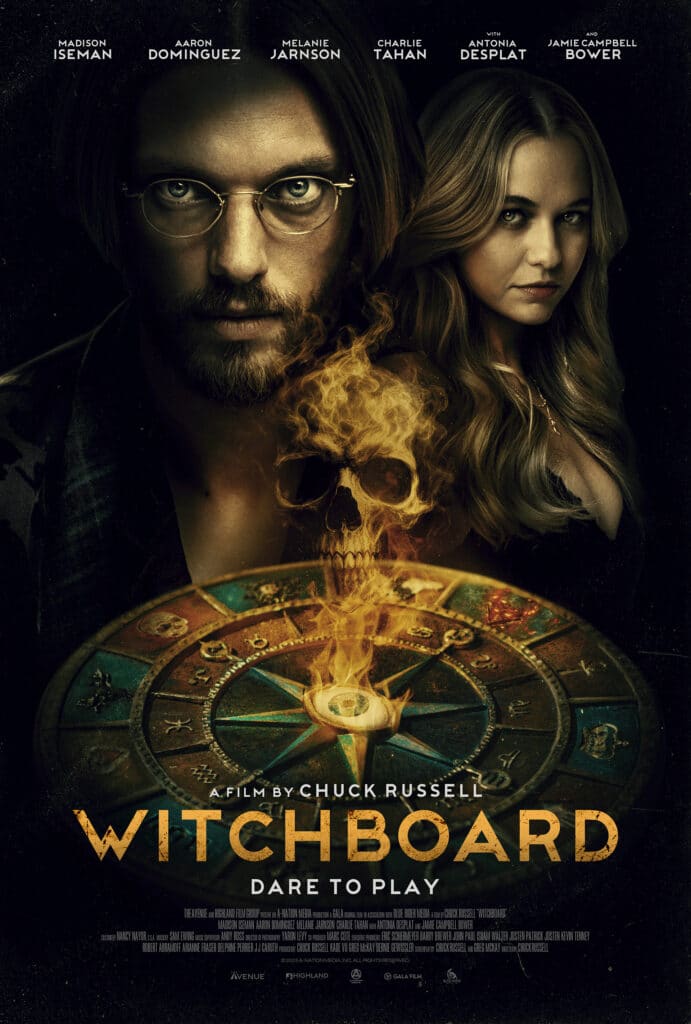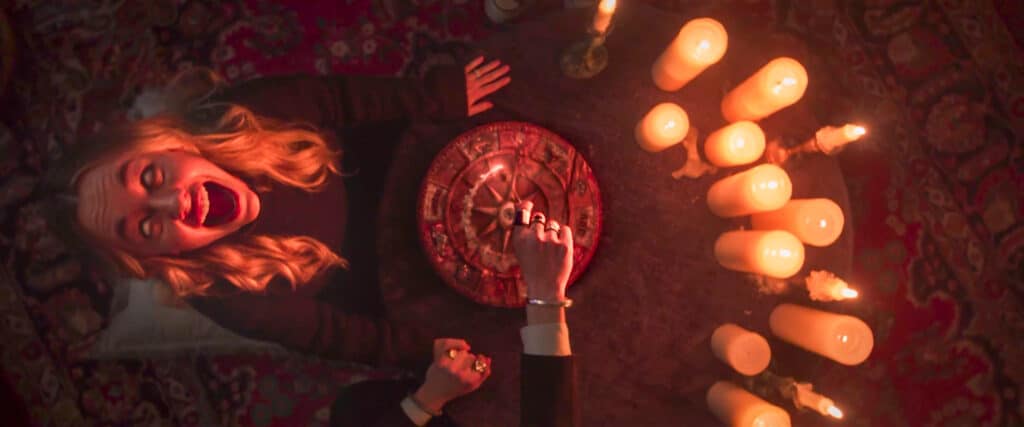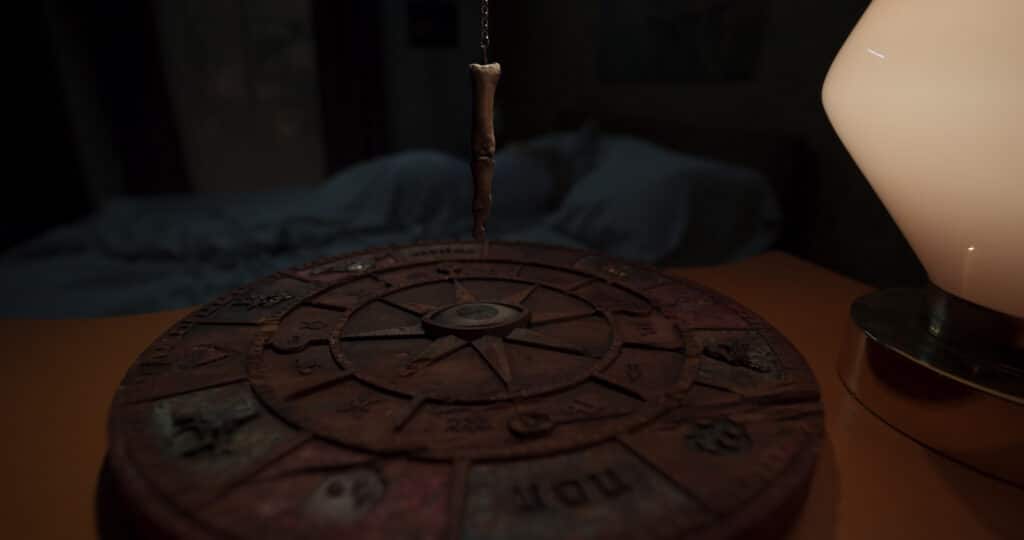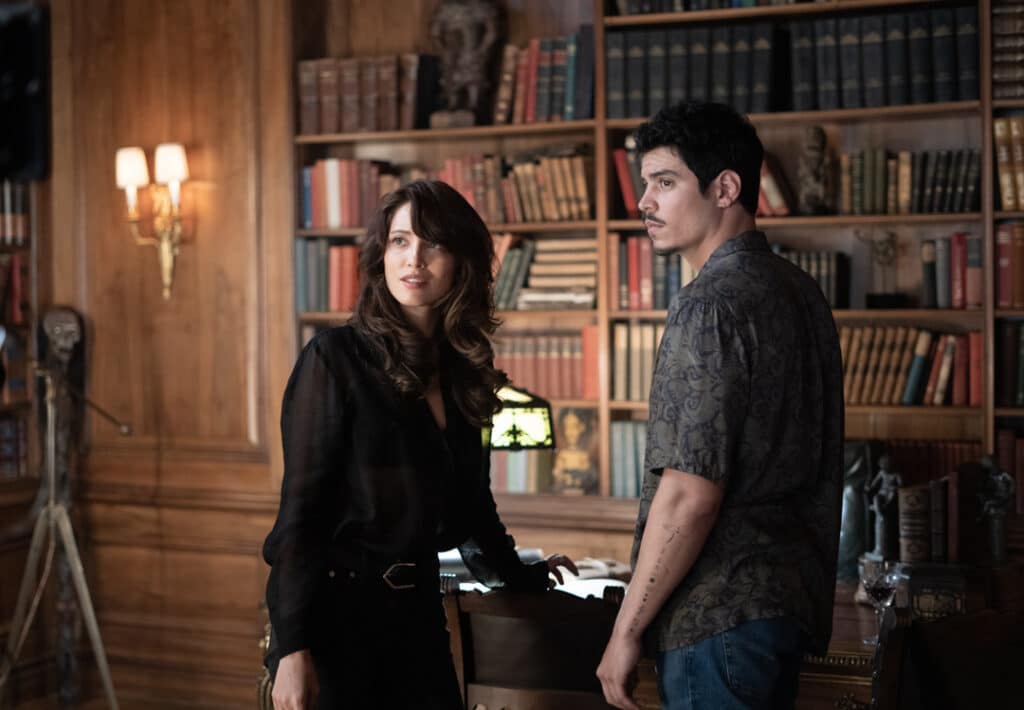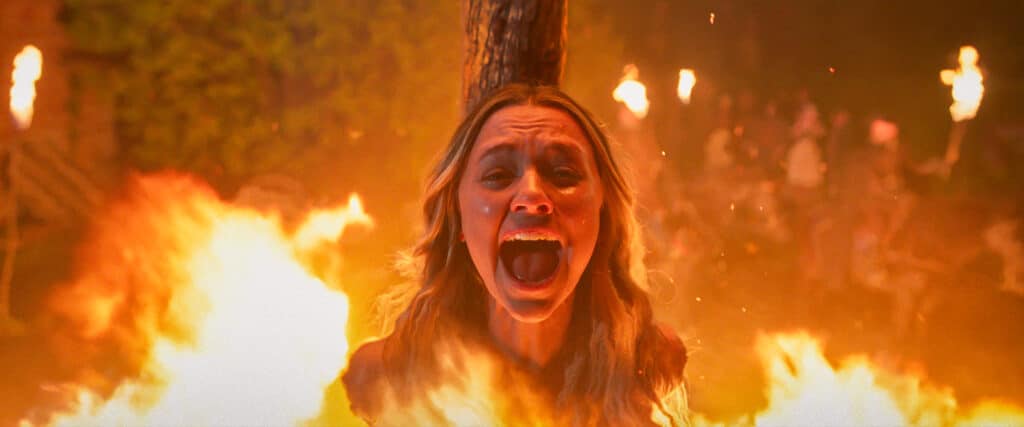By MATTHEW C. DUPÉE
Mention the name of filmmaker Chuck Russell, and genre fans recall his visionary take on Freddy Krueger in A Nightmare on Elm Street 3: Dream Warriors and his reimagining of the BLOB in 1988. Despite these remarkable horror cinema milestones, Russell sought to avoid being pigeonholed as a director of only horror films. He focused his efforts on creating equally as impactful and groundbreaking comedies and action blockbusters such as The Mask (1994), Eraser (1996) with Arnold Schwarzenegger and The Scorpion King (2002).
Now, Russell returns to his horror roots with a bold reimagining of the 1986 Kevin Tenney cult classic, WITCHBOARD. The film cleverly dives into the dark side, with a character-driven story that, at times, splits into parallel arcs but never shies away from torrents of splatter effects and gore-o-plenty. Russell maximizes the use of practical and visual effects while leveraging a strong cast of young up-and-coming actors for this fresh take on the Ouija board horror subgenre. RUE MORGUE caught up with Russell just before WITCHBOARD’s national theatrical release on August 15.
Welcome back to horror. We’re glad to have you back. What was the impetus for your return to the genre?
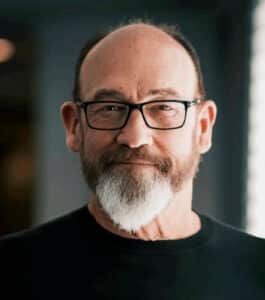
Filmmaker Chuck Russell (photo by :A.J. DeLeon)
Well, I never meant to be away from horror this long. I always intended to go back. I had different ideas in my notebook, but I didn’t want to get pegged as a horror director after A Nightmare on Elm Street 3 and The Blob. Thankfully, those films were very well received and still remembered, but I wanted to top myself in the genre. I didn’t want to go back to horror until I felt I had something that I could move the game ahead for myself and for my audience. And then, WITCHBOARD popped up, and I thought this is something that has a pop culture resonance that’s worth reinventing. I had a big idea to incorporate pendulum boards and a whole new visual style for the film.
The inclusion of the pendulum board as a twist was quite brilliant. Was there anything that you wanted to honor from the original WITCHBOARD while also making it new, fresh and your own?
Yes. I don’t do literal remakes. You know, that’s a valid kind of filmmaking. I’ll take the memory, the pop culture resonance is how I think about it, where there’s already an anticipation with the title. I don’t go back and research very hard. What I remembered about WITCHBOARD was Tawny Kitaen and this amazing shower scene. She was a big MTV star back in the day. I also recalled the missing ring, which kicks the story off in their case, with an Ouija board. The other thing I enjoyed about the original was the sense of young people in their early 20s, late teens, joining together against forces of evil, because it’s true to life. At that age, you’re finishing school, you’re going out in the real world and you realize bad things happen to good people. So, in both the Elm Street series, and now in WITCHBOARD, I wanted to dramatize that point in life where you come up against an evil you never imagined could be real and how each of us has a hero that can rise from within in a case like that. I think that is fascinating.
I felt when I was watching the film that you tapped into this notion that evil is ageless. Whether in the flashbacks in the 1700s or the present-day setting, evil is omnipresent. I was also struck by this idea of the pendulum board. What is your experience with the pendulum board, and how much research did you conduct when designing it?
Correct, I did design the pendulum board, but I also wanted to be responsible with it. For instance, there’s not a pentagram on it, but there are ancient symbols that can be interpreted as good or evil. To me, that’s the more interesting scrying, the more interesting way to connect our subconscious to these devices. It’s similar to Tarot and to Ouija boards. The Ouija board was developed out of pendulum boards years later. Pendulum boards go all the way back to ancient Egypt. They were eventually outlawed by the French Pope in the 1700s, and people would be burned at the stake for even having them. They were considered dangerous to have and disappeared from the culture at that time, and that explains why we’re not as familiar with pendulum boards. Ouija boards evolved out of that. It’s another way to contact spirits and another way to tap into your subconscious. People have different beliefs, but I am not promoting this stuff. All of magic is about manifesting. Don’t get involved, especially if you don’t know what you’re doing. So, it’s a cautionary tale about the fact that we do live in a spiritual world. I believe that firmly. I’ve experienced it in some ways myself, in my life, and I encourage reaching for the light and recognizing the darkness when it enters your life.
I know you shot in Montreal and captured some great French architecture, but did you also shoot in New Orleans or any other locations?
We did shoot some in New Orleans. So, you do see the real New Orleans. The interesting thing about Montreal is that some of those buildings really are 300-plus years old. The dungeons there were actually part of an old fort that you see in the film. People have asked me, “Do strange things happen to you when you’re making horror films?” As a director, I’m sitting there taking notes while the crews are wrapping, and if I’m not thinking straight, I might be the last one on the set. And on that particular set, I thought, what am I doing? If any place is ever going to be haunted, this is it. That set we were in was built in the 1700s, and it was this old fort, and I just remember thinking, I don’t want to be here alone. I had to get myself out quickly. But it also helped with visualizing the parallel storyline. You’ll see the contemporary heroes are affecting the past, which is set in the 1700s, and the past is affecting the contemporary heroes, which is something I’ve been wanting to try and film, and that was a successful experiment I’m very happy with.
The rich tones and textures that you achieved were also intriguing. Was there anything that, as you were planning, you wanted to showcase or highlight in terms of getting those New Orleans vibes visually?
Yeah. I had an experience in New Orleans years ago, when a family member was seeing a specialist and had a procedure at a hospital there. So, as a guardian, I was staying by myself in New Orleans for a week, and I was just hanging around the French Quarter. I started seeking out, because of my interest, this notion of whether there were really black magic shops here. The music and the colors, the whole vibe of New Orleans, I associated very closely with real witches and witchcraft. The city’s history goes back to France, so that’s very closely associated with French Montreal, and it all came together with me. With the opportunity to do WITCHBOARD, I thought, it’s got to be set in New Orleans. I have to have cats! I have to have this music and the food and the colors. So, the trick for me was, how do I make a lush film with those tones that we observe in New Orleans and still make it terribly frightening? I didn’t want to just do a dark, pitch black film that was desaturated – you know, when the colors are not very vibrant. For me, it was an experiment in having a lush film that had an edge of glamour but also an edge of terror. That was my goal in WITCHBOARD.
I think you succeeded there. Did you find yourself inspired by any other witchcraft-heavy films of years ago or more contemporary offerings? Or did you approach it from your perspective without really seeking out any other influences?
I avoid that. If I’ve seen something in another film, I won’t do it. I may have, subconsciously. But I’m like everyone else. I’ve seen, who knows, a couple of thousand films. How I work best is being inspired by what was a dark time, actually, in my life, in New Orleans, and what I have learned from the real research of what a pendulum board is – and my own experiences with the dark and the light spiritual world. We do live in a spiritual world. People need to acknowledge that and reach for the light, and the dark is easily defeated. One candle destroys a room full of darkness. I like showing characters we care about. Therefore, the scares are twice as effective, and I have the young cast in this film, which I’m quite delighted with, starting with Jamie Campbell Bower, who blew my mind in Stranger Things. He was our first hire, and Madison Iseman and Aaron Dominguez were hired to fill out our leads. And there’s nothing more fun as a director to have this kind of disparate, different group of young people to really pull off the story with.
I, for one, was drawn to the characters as well as the strong performances. When I was watching the cat scenes, I thought those had to be difficult to shoot. Were there any big challenges you faced with the cats on set?
It started with my production team, who said, “Absolutely not. You cannot train cats!” I work with a lot of animals, but there’s a process, a kind of technique I work with and implement. I never allow any animals on my sets to be frightened or in any way threatened. We never use any of that. The cat we used was named Tatiana. So, it’s all about love and the tuna paste that Tatiana loved, and it’s an amazing cat. We got everything we needed to shoot with a real cat. I think there’s one CGI shot in the whole movie regarding the cat. But I couldn’t argue with my production team, because I know cats are notoriously difficult, and CGI cats don’t look that great. There was a Tom Hanks movie fairly recently they showed me, where CGI cats looked very stylized. It’s funny that they can get lions and tigers and dinosaurs so well in CGI, but a house cat, the CGI artists warned me, their movement is very, very difficult. And I didn’t want to go there. I wanted to do practical effects in this film. Fortunately, we succeeded with Tatiana, the amazing cat. For the audience, just know that when the cat shows up, watch out. The cat is a witch’s familiar. It was a wonderful little suspense element to have our cat creeping around and being part of the action.
With WITCHBOARD marking your return to horror, is this something that we might expect more of going forward?
Yes, I held off because I wanted to wait for a project where I felt I could top myself. I’m my own harshest critic. I wanted to do things I meant to do in horror and things I’d like to do in horror that I hadn’t done yet, and do them as effectively as I did on A Nightmare on Elm Street 3 and The Blob and have as much fun. Those films all have a little bit of an edgy humor to them. I also wanted to make something this entertaining. I welcome everyone to check it out.


